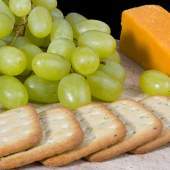Thailand

In recent years, the popularity of Thai cuisine has burgeoned in the Chicago area, and it’s easy to see why. Even a cursory glance at a menu in a typical Thai eatery will tell you that there is something available for just about every taste, from sweet to salty, bitter to spicy, sour to soothing.
Carnivores will find beef, pork, chicken, and a wide variety of seafood. Vegetarian? No problem! There are noodles, rice (glutinous and non-glutinous), tofu, and many kinds of vegetables and fruits. And the food is cooked in almost every way imaginable: stir-fried, steamed, sautéed, baked, boiled, grilled, stewed. Not to mention that it’s healthy and in most cases, quite affordable. So, chances are that if you live in the area, there’s a busy Thai restaurant nearby with many passionate fans. Apparently, that includes one of tonight’s reviewers, who chose Herb in the Edgewater neighborhood. Why does Thai food offer so much variety?
The answer may lie in its neighbors, and its forbearers. Thailand (in area about the size of Spain) borders Cambodia, Laos, Malaysia, and Myanmar; is very close in proximity to Vietnam and China; and is just across the Bay of Bengal from India. Add to that list the Persians and the Arabians passing through; the early Europeans who began arriving beginning in the 1500s — from Portugal, the Netherlands, Great Britain, and France; and the more than 40 ethnic groups of which its population is currently composed, and it is easy to see why Thai cuisine is so dizzyingly diverse. All of these influences are present in each dish to large and small degrees, also depending upon the region in Thailand in which you find yourself. The renowned Thai chef Mom Luang (known in the West as McDang) once maintained that the country’s cuisine is characterized by “intricacy; attention to detail; texture; color; taste; and the use of ingredients with medicinal benefits, as well as good flavor, and care being given to the food's appearance, smell and context.”
Pad Thai
Most Thai restaurant menus include an English translation of each item, but just in case, here’s a partial glossary of terms (spelling may vary):
- Phat/Pad – stir-fried
- Tom – boiled
- Krop or krob – crispy
- Niao – glutinous or sticky (as applies to rice)
- Nam – soup or broth (literally, “with water added”)
- Kaeng – curry (there are several different kinds, some very hot)
- Kuai tiao – white noodles
- Sen lek – rice noodles
- Ba mi – wheat and egg noodles
- Wun sen – glass (or cellophane) noodles
- Khao – rice
- Nua – beef
- Mu/Moo – pork
- Kai/Gai – chicken
- Khai – egg
- Khai tot – omelette
- Pet – duck
- Pla – fish
- Kung/Gung – shrimp
- Phak/Pak – vegetables
Many dishes (especially from the southern region of Thailand) contain coconut oil or coconut milk. For those worried about nut allergies, you might be wondering if coconuts fall into that category. The short answer is no — it is actually a “drupe,” defined by The Best of Raw Food as “a fruit in which an outer fleshy part surrounds a pit of hardened endocarp with a seed inside.” (It doesn’t sound very appetizing, but keep in mind that the coconut’s fellow drupes include mangoes, apricots, cherries, peaches, plums, nectarines, pistachios, and…wait for it…coffee.) Fruit, by the way, is an important component of Thai cuisine, generally served for dessert, but also as a component in some main dishes. Another popular sweet is roti, a fried envelope of dough with such fillings as banana and chocolate.
Some dining etiquette tips: ideally, Thai food is served “family style” (to be shared) at low tables for diners seated on mats on the floor; traditionally, it was eaten with the right hand only (now, with fork and spoon). Chopsticks are sometimes offered, but only for a noodle dish served in a bowl. Don’t ask for a knife; you should not need one. If you want to dine like a true Thai native, make sure the eldest person at the table gets first access to the serving dishes and begins to eat; if you are the youngest person at the table (within reason!), it is your responsibility to serve the rice.
Each meal includes sauces and pastes to be mixed with the rice, and dishes are flavored with a variety of herbs and spices. Chilies and curries (courtesy of some long-ago Buddhist monks from India, it is said) are also used, making some dishes (fair warning!) quite spicy.
Thai food expert and chef David Thompson has explained that Thai cooking is about “the juggling of disparate elements to create a harmonious finish.” Those “disparate elements” continue to evolve even today as contemporary chefs innovate, making each time you go out for Thai food an exciting culinary adventure.





